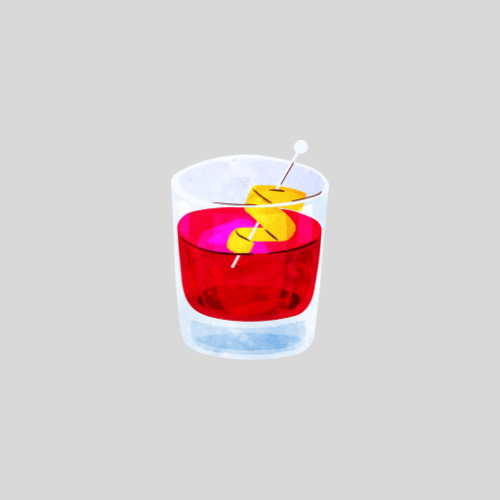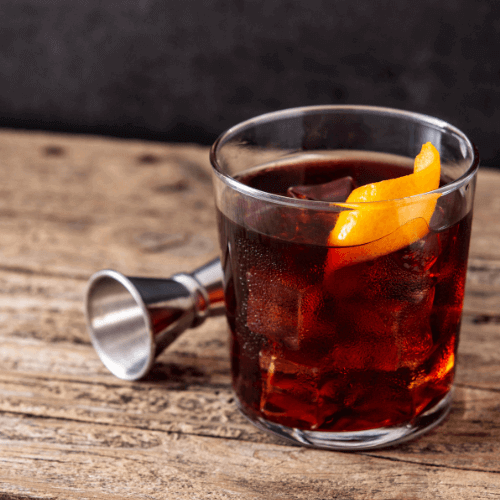Table of Contents A coupe glass is a type of stemware glass that is used to serve champagne, cocktails, or...

The world of cocktails is rife with tales of origin, mixology, and the cultural contexts that give birth to iconic cocktails. One such drink that has etched its mark in the annals of mixological history is the Boulevardier cocktail. Crafted by Erskine Gwynne, an American expatriate living in Paris in the 1920s, this cocktail brings together the boldness of rye whiskey or bourbon, the bitterness of Campari, and the sweet embrace of vermouth.
To comprehend the genesis of the Boulevardier cocktail, one must first acquaint oneself with Erskine Gwynne, the creative mind behind both the drink and the magazine that inspired its name. Gwynne, an American-born writer, ventured across the Atlantic to Paris, the haven for expatriates seeking refuge from the societal norms and political unrest of the time. It was in this cosmopolitan city that Gwynne decided to carve out his niche.
In 1927, Gwynne founded the monthly magazine “Boulevardier” catering to the expat community and capturing the essence of Parisian life through the eyes of those who had chosen to make the city their home. The magazine became a literary refuge, fostering a sense of camaraderie among the expatriates who sought solace and inspiration in the pages of Boulevardier. As the publication gained popularity, it inadvertently laid the foundation for a cocktail that would become synonymous with the expatriate lifestyle – the Boulevardier cocktail.
Erskine Gwynne’s ties to the cocktail world were not limited to his role as a magazine publisher, he was also a regular patron at Harry MacElhone’s famed Harry’s New York Bar in Paris. This iconic establishment served as a meeting point for the literary and artistic expatriate community, making it the perfect incubator for creative ideas, including the birth of a new cocktail.
Gwynne’s cocktail, the Boulevardier, blended the sophistication of Parisian life with the boldness of American spirits. The original recipe, as credited by Harry MacElhone in his 1927 book “Barflies and Cocktails” features a trio of ingredients: rye whiskey or bourbon, Campari, and sweet vermouth. The choice of whiskey infuses the drink with a robust character, while Campari adds a bitter complexity and sweet vermouth provides a balancing sweetness.
It was in MacElhone’s book that the Boulevardier cocktail gained widespread recognition. The bartender and author played a pivotal role in popularizing the drink beyond the confines of his bar. In “Barflies and Cocktails”, MacElhone not only shared the recipe but also acknowledged Erskine Gwynne as the creative force behind this newfound cocktail. This literary recognition added an extra layer of charm to the cocktail, aligning it with the creative and bohemian spirit of the expatriate community in Paris during the 1920s.
At the heart of the Boulevardier cocktail lies its distinct and carefully curated combination of ingredients. The choice of rye whiskey or bourbon sets the tone for the drink, infusing it with the rich, warm notes characteristic of American spirits. The inclusion of Campari, an Italian aperitif known for its bold bitterness and vibrant red hue, introduces a layer of complexity that elevates the cocktail to a new level of sophistication.
The final component, sweet vermouth, serves as the bridge that connects the contrasting elements of whiskey and Campari. Its sweetness not only balances the bitterness of Campari but also adds a velvety texture to the overall profile of the Boulevardier. The interplay of these three ingredients creates a cocktail that is both bold and nuanced, paying homage to the diverse backgrounds and tastes of the expatriates who frequented the bars of Paris in the 1920s.
45 ml rye whiskey or bourbon
30 ml Campari
30 ml sweet vermouth
Ice
Garnish: orange twist

Add the rye whiskey, Campari, and sweet vermouth into a mixing glass.
Add ice and stir for 10-12 seconds, until chilled.
Strain into a rocks glass over ice.
Garnish with an orange twist.
Table of Contents A coupe glass is a type of stemware glass that is used to serve champagne, cocktails, or...
Table of Contents The world of mixology boasts an impressive array of cocktails, each with its own unique history and...
Table of Contents Among the myriad of cocktail creations, one particular cocktail stands out for its exquisite blend of flavors...
Facebook Print Email WhatsApp Table of Contents The Naughty but Nice cocktail, sometimes referred to as the Naughty and Nice...
MixDrinkiPedia.com is a participant in the Amazon.com Services LLC Associates Program. As an Amazon Associate we earn from qualifying purchases. Amazon and the Amazon logo are trademarks of Amazon.com, Inc. or its affiliates.